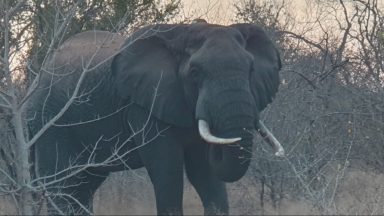Every translocation is a high-risk operation for both wildlife and humans. The risks are not lightly taken. Everyone involved is highly trained and the teams work to strict instructions from experts, with veterinarians at hand in case things go wrong.
Why take such great risks to move wildlife from one landscape to another? Because wildlife are the key to the rejuvenation and ongoing fortunes of southern African countries. Translocations boost the local populations of wildlife, which ultimately increases tourism and related income opportunities in and around transfrontier conservation areas. In the long-term, translocations contribute to economic growth and development in southern Africa and its communities.
So, every single animal matters.
Sometimes, an animal needs some physical handling. When a zebra foal is separated from its family group, a team of rangers lifts it across the final stretch, then ensures it can stand, before reuniting it with its family. Ensuring that family groups are kept together is vital when translocating animals with tight family groups, such as zebra or elephant, to ensure that the animals travel safely and then settle well in their new location. Splitting a female zebra from her foal will cause great stress for the animal who might then try to break out for the duration of the journey in order to find her youngster, no matter how strong the sedatives.
Once the zebra and wildebeest are safely gathered into the trucks, preparations are made to sedate the animals so that the journey they will make to Zinave National Park is as easy as possible for them. Sedatives are dispensed to each animal by the veterinarian, to dull the animals’ nerves yet allow them to stand throughout the journey. It will no doubt be the first time the animals have encountered so many people in close quarters – so much unusual noise – so their senses will be on high alert.
The trucks will make their way carefully from South Africa into Mozambique, with the animals’ welfare top of mind the whole of the 1250 kilometres. These zebra and wildebeest are part of the future of Zinave National Park and the future prosperity of Mozambique. One day these animals might well be out in the savannah, watched by small groups of tourists who come specially to encounter wildlife in the bush. And each animal will be partly responsible for the improvement in lifestyle of communities around the national parks, and a more sustainable way of life for all.
Peace Parks Foundation and partners are already developing new camping facilities in Zinave National Park where adventure travellers can stay and see these new animals. In the future a range of low-impact tourism facilities will appeal to the luxury traveller too. In this way, translocations really are an important step in creating a sustainable future for Africa.
If you would like to help rewild Africa and be part of the Peace Parks’ mission, you can donate here: www.peaceparks.org/donate.
Remember, it’s not just a gift. You will be making a meaningful difference and impacting the course of conservation history.

